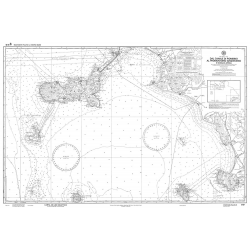Your cart
There are no more items in your cart
Nautical Cartography

The term nautical cartography refers to depictions on nautical charts of geographic information, put together through technical and scientific knowledge. Nautical charts may be oceanic, general, coastal, or nautical plans, and differ in the scale used in each. Nautical charts are characterized by various colors, which emphasize the various classes of information, and by symbols. In recent years, the use of electronic nautical charting has become progressively more widespread: nautical charts that can be consulted through ECDIS (Electronic Chart Display and Information...
Read more
The term nautical cartography refers to depictions on nautical charts of geographic information, put together through technical and scientific knowledge. Nautical charts may be oceanic, general, coastal, or nautical plans, and differ in the scale used in each. Nautical charts are characterized by various colors, which emphasize the various classes of information, and by symbols. In recent years, the use of electronic nautical charting has become progressively more widespread: nautical charts that can be consulted through ECDIS (Electronic Chart Display and Information System).







































